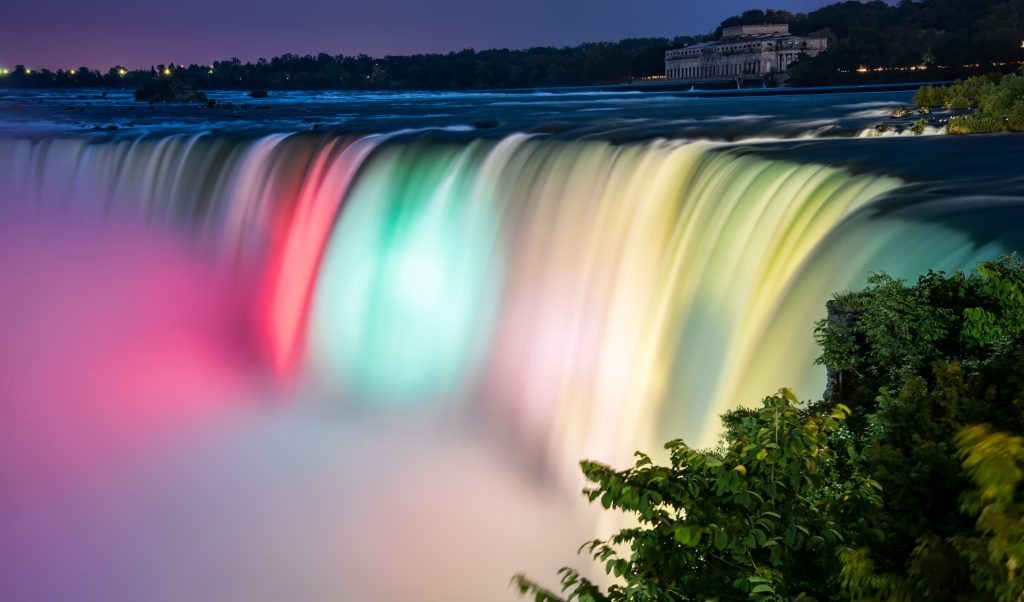Noble Secrets from an Orthodox Buddhist ex-Monk
(the guide series – part 4)
by Alex Walking

BETTER LATE THAN NEVER! A long time coming but here it is.
This article is the fourth in an ongoing series. A handful of paragraphs from the first article, How to use Sex and Drugs to be Enlightened! are repeated here for cohesive reading. In today’s Psychedelic Renaissance, there’s no fully enlightening information. This series fills that void. Be completely prepared, and you’ll have the best adventure. British spelling is a conscious choice.
Legal Disclaimer: Pre-existing psychological and physical conditions may render any experimentation with certain meditation and yoga techniques direly consequential. Due diligence is everyone’s personal responsibility. In light of all of the above statements, all liability is disclaimed.
Nikolai Tesla, a genius physicist and the inventor of alternating current (1856-1943), famously said in 1942, “If you want to find the secrets of the universe, think in terms of energy, frequency, and vibration.”[1]
This irregular flux we call the universe consists only of networks of states acting as conditions for other sets of states to come about. It’s all very specific. With the removal of any of the conditioning states as a factor, the resultant network of states changes as well. In Theravada, this law of nature is called the ‘interdependent origination’. It forms the basis of existence, the same mechanism working moment to moment as well as life to life.
Nothing exists independently of other things. Everything that exists does so because other things exist. Nothing is permanent. Even anything you might consider to be a permanent ‘you’ is just a (tightly woven) network of states that haven’t been unknotted. A sense of self is the result of these states rolling over and conditioning each other too quickly to know them separately. As Bhikkhu Sumedha once said to me, “It’s like the whirling brushes of a dynamo creating an electrical force.”
The Buddha didn’t teach an originating cause of the universe but instead spoke of multiple expansions and contractions of multiple world systems.[2] As such, it’s all just empty phenomena rolling on endlessly. This is why an experience outside of this state of flux – an experience of Nirvana – is crucial to know it accurately for what it is. To know no frequencies at all is Nirvana.
I prefer to use the Pali word Nibbana, as I’ve just heard too many woolly thinkers pontificate using the Sanskrit word Nirvana, all of them ambiguously. The Pali term is always quite specific. I like to define Nibbana as the ‘here and now free of definition,’ or as the ‘unformed,’ as my teacher of Samadhi liked. Nirvana/Nibbana is usually translated as ‘to blow out’, as in, a candle or flame.
[1] www.teslatech.info/ttstore/conftapes/teslatech/2010jul/2010p13.pdf. In conversation with Ralph Bergstresser.
[2] Anguttara Nikaya 10.29.2; Visuddhimagga XIII, 13f. Gods and the Universe in Buddhist Perspective by Francis Story is a very accessible treatment of Buddhist cosmology. ‘Multiplicity of world-systems’ p. 37f., BPS Wheel Publication 180/181, 1972
[1] www.teslatech.info/ttstore/conftapes/teslatech/2010jul/2010p13.pdf. In conversation with Ralph Bergstresser.
[2] Anguttara Nikaya 10.29.2; Visuddhimagga XIII, 13f. Gods and the Universe in Buddhist Perspective by Francis Story is a very accessible treatment of Buddhist cosmology. ‘Multiplicity of world-systems’ p. 37f., BPS Wheel Publication 180/181, 1972
What qualifies me to speak

I spent six out of seven years in my twenties in Asia benefitting from special attention in two extremely important inner sanctums of Theravadin Buddhism. I took to living in caves and jungles practicing meditation. I became a fully ordained monk of the orthodox Theravadin forest tradition in northern Thailand. There and in Sri Lanka, I had two forms of mental training thrust upon me by adepts in them which blew my world not apart but right open.
My teacher of Samadhi meditation was the most incredible Mrs. Helen Wilder in Sri Lanka. She taught English and Philosophy at Cornell University for many years. Newly widowed, Helen had just become the personal secretary (her term) of the Mahathera Nyanaponika, an old German Buddhist monk. He was the world’s most respected living Western-born Theravadin scholar and Pali translator.
Helen was a master of Samadhi. She could travel through the frequencies with ease. She’d bounce me into different states that were always incredibly charged electrically and more vivid than my normal waking state of awareness. Helen could slice, dice, and julienne the explanations every way imaginable for me to understand what was happening. The subjects ranged from Buddhist cosmology to the principles of magic.
My teacher of Vipassana meditation was Bhikkhu Anavilo, formerly George Bickell. His royally bestowed title translated as “the teacher for foreigners under the auspices of the teacher of meditation for all of Thailand.” I landed on his doorstep in Bangkok unaware it was the meditation section of Wat Mahadhatu or even what the place was. At that time, it was the temple which was to Thai Buddhism what the Vatican is to the Catholic government.
The experience of Nibbana was thrown into my system at a toe-in-the-door level of understanding by Phra George, an accredited master in the world’s oldest lineage of Buddhist monks through the path of Vipassana. Understanding Nibbana at four progressively deeper levels confers enlightenment from barely to fully. He taught me how to repeat the experience which is essential for becoming fully enlightened. I was objectively tested for it over and over by his lineage’s secret methods to make sure there was no mistake.
Realize all meditations are only two types

I need to get technical about two forms of meditation for a few minutes as I wish to empower you, dear reader. Understanding the difference between these two types of meditation will open the rest of this article for you, perhaps your existence as well.
One is Samadhi, a Pali and Sanskrit word for what I define as ‘accessing the matrix of existence.’ Pali was the language the Buddha spoke. The other is Vipassana, a Pali word, which I define as ‘discorporating the matrix of existence’ as in, the opposite of incorporating. Being fully empowered as an Individual comes from experiencing the results of both types.
Samadhi usually translates into English as ‘serenity,’ ‘tranquillity,’ or ‘concentration.’ Samadhi is known throughout the world, viewed through the lens of local cultures in their religious teachings. From the blissful, mystic states of Christian nuns to the shamanic practices of the Balinese Hindu group I was initiated into years later, all fall into this category. Science tells us everything is made up of frequencies, like signals on radio waves. Full absorptions in Samadhi are like changing the station on the radio to another frequency.
A person can teach themselves Samadhi to the first level of absorption, if they have to, as it’s working with an increase in generated phenomena as the sign of progress. The ‘sign born of perception’ arises in many ways. For some, it may be light, for others sound, a tactile sensation or all three, plus taste or smell combined.
Vipassana, which means ‘inward vision’ and is usually translated as ‘insight meditation’ is unique to Buddhism. Most practitioners just find their lives go more smoothly for practicing it. My teacher liked to say the first sign of progress in it is that your friends become nicer people.
It uses a different set of objects of awareness than Samadhi as the purpose of the practice is different. Instead of developing concentration for absorbing into one finer frequency, to the exclusion of coarser frequencies, a person develops mindfulness which is an inclusive form of focus. Mindfulness sorts through the current impressions that flow through the sense doors moment to moment which create our everyday, mundane, coarse frequency of many working parts.
In the Vipassana method I learned, one focuses on the abdomen rising and falling with one’s breathing or the feet during slow-motion walking. These are impossible to build a frequency with because they’re moving. As the mind naturally sifts through the mental and physical impressions that pop up, a person sees their reference points for self-identity. The opportunity arises to lose the ones that aren’t profitable.
Thoroughly developed, fully concentrated absorption into that object-in-motion drops a person’s awareness in between the cycles per second, so to speak, of the coarse frequency they’re already in. Then a person has an experience of no frequencies at all. This is like finding the on/off switch on the radio instead of tuning into a different station.
Those ‘cycles per second’ of coarse-frequency mundane awareness are composed of compulsively incessant moment-to-moment definitions and momentary subjective reactions to them. These are what shape our perception of reality. Stepping outside of them confers an understanding of what they are.
The four ways to Nirvana:[1]

1) Vipassana preceded by Samadhi.
2) Samadhi preceded by Vipassana.
3) Samadhi coupled with Vipassana.
4) The Zen koan.
[1] Anguttara Nikaya 4.170
The magician’s path of power

1) Vipassana preceded by Samadhi. First, one develops the ability to change frequencies. This is called ‘mundane absorption’. Then a person changes the object of awareness to one that leads out of frequency awareness altogether. This is called ‘supramundane absorption’.
Taking the analogy used above further; it’s like developing the muscles in a weak arm so you can lift it to tune the radio using a dial. This takes less strength and dexterity than learning how to turn it off with, say, a small, stiff, flip switch which takes more of both, and so comes after. In this case, it’s developing mental muscle and accuracy, so penetration of the moment with full concentration is easier.
Samadhi is so important it’s the centrepiece in the Pali formula Sila-Samadhi-Panna: (developing) remorseless behaviour, (to develop) concentration, (to develop) understanding. This formula is the basis of the Visuddhimagga, ‘The Path of Purification’, written in Sri Lanka in the fifth century CE. It’s one of two main commentaries considered as authoritative as the Pali canon in Theravada. An encyclopedic manual of the wandering ascetic monk’s path as it existed up to that point in Lanka, it’s complete with detailed instructions on developing supernormal powers as well as understanding the nature of reality.
As Helen said, it was written to try and stop the onslaught of the Buddhist Dark Ages. By then, care for the texts and preaching them came before practising their contents as official church policy.[1] Predictably, bitter political infighting between powerful monasteries had become the norm.[2] At the same time, a loss of supernormal abilities among the remaining ascetic monks was coming to pass. The future was anticipated to be a descent into chaos.
The Visuddhimagga (The Path of Purification) is available as a free download from the internet.
Vipassana preceded by Samadhi is the traditional way for yogis, also known as ‘the magician’s path’. The practice of ‘accessing the matrix of existence’ can enable one to develop abilities with the mind to cause changes in the world around one, if so wished, before ‘discorporating the matrix’. Or just for kicks afterwards. Such powers are called the benefits of developing concentration without necessarily developing understanding.
This first method is considered to be the long road to the point of emergence, but one is comforted by the blissful nature of the concentration. Hence, we have the translation of ‘serenity’ for Samadhi. What’s the hurry anyway, if you’re serene?
[1] Visuddhimagga, Introduction, p. xxix
[2] Ibid., pp. xxviii-xxx
Discorporating the matrix

2) Samadhi preceded by Vipassana. Often, this is defined as ‘bare Vipassana alone’. I heard this definition from both my Samadhi and Vipassana teachers as well as the Thai monk who was the meditation teacher in the monastery in the north of Thailand where I ordained. That’s because at the moment of penetration there’s fully concentrated absorption into the chosen object of awareness which is in motion. This results only in the cessation of the awareness of all frequencies. Access to supramundane absorption (Nibbana) just requires momentary concentration, khanika-Samadhi in Pali.
Mixing them up

3) Samadhi coupled with Vipassana. These are developed together in tandem or, in collaboration in a stepwise fashion. The Thai meditation teacher in the northern monastery put it simply: “One changes the object of awareness back and forth, very quickly from one to the other,” he said while wiggling two fingers to demonstrate back and forth.
Breaking it down

4) The Zen koan. A koan is a nonsensical question which the logical mind can’t answer. This pushes a person into an experience unreachable by reasoning. Stories of such are famous in Zen Buddhism. They call this ‘sudden enlightenment’. Nothing might happen for twenty years of honing concentration through severe monastic discipline, but if it finally does, then it happens quite suddenly. The habit of discipline makes it easier to review the path by which one came to the point of emergence and deepen the understanding of the experience.
“Ratiocination around a single point until the logical mind breaks down, not finding a resting place inside its parameters.” was how Helen defined this one. Phra George agreed with that when I spoke with him about this concept.
Among Theravadin scholars, there’s confusion about this fourth method. Translators speak about ‘agitation’ of the mind or ‘restlessness’. Others: ‘excitation’. It’s either about the nature of reality, the Buddha’s teaching or some corruption of insight. They aren’t certain as to whether this is under control or not. They contradict each other. Thus, academic discourse itself falls into the paradox it fails to explain.
Sustaining that applied thinking a little more, perhaps their logical minds will be on the verge of breaking down, not finding a resting place inside their parameters.
******
There’s a noble intention from sixteen centuries ago closing every chapter in the Visuddhimagga (The Path of Purification) that I amiably echo here for you:
[This was] ‘…composed for the purpose of gladdening good people’.
‘Now it is time for you to do as you see fit’ – Sid the Buddha[1]
[1] Samyutta Nikaya 35.88, 35.243, 44.1, 54.9, 55.6
This article is composed of partial threads pulled from the book Sex, Drugs, Enlightenment: Noble Secrets from an Orthodox Buddhist ex-Monk. They have been reformatted with only minor changes and subtitles to flow smoothly together. Originally published at SexDrugsEnlightenment.com on Nov. , 2021
Yoast SEO Premium
Move upMove downToggle panel: Yoast SEO Premium
Post Settings
Move upMove downToggle panel: Post Settings
Here you will find various options you can use to create different page styles.
| Body CSS Class(es)Add a custom CSS class to the <body> element. Separate multiple class names with a space. | |
|---|---|
| Fullwidth Post LayoutIf your global content layout includes a sidebar, selecting this option will remove the sidebar for this post. | |
| Alternate Index TitleFilling out this text input will replace the standard title on all index pages (i.e. blog, category archives, search, et cetera) with this one. | |
| Background Image(s)Click the button to upload your background image(s), or enter them in manually using the text field above. Loading multiple background images will create a slideshow effect. To clear, delete the image URLs from the text field and save your page. | |
| Background Image(s) FadeSet a time in milliseconds for your image(s) to fade in. To disable this feature, set the value to “0.” | |
| Background Images DurationOnly applicable if multiple images are selected, creating a background image slider. Set a time in milliseconds for your images to remain on screen. |
Custom Fields
Move upMove downToggle panel: Custom Fields
Add New Custom Field:
| Name | Value |
|---|---|
| — Select — edd_download_files edd_price edd_variable_prices menu-item-anchor_graphic_icon menu-item-anchor_graphic_icon_alt menu-item-anchor_graphic_menu_item_display sfsi-fbGLTw-description sfsi-fbGLTw-title sfsi-pinterest-media-image sfsi-social-media-image social-pinterest-description social-twitter-description stamper_woo_product_specific_stamp total_sales Enter new | |
Custom fields can be used to add extra metadata to a post that you can use in your theme.
Ultimate Social Media – Sharing text & pictures
Move upMove downToggle panel: Ultimate Social Media – Sharing text & picturesNote: This section currently is not active (except the definition of the Tweet-text). Maybe this is because you also use another plugin (e.g. SEO plugin) which already places the required meta tags on your site to define which picture & text should get shared. If you want to enable our plugin to place the meta tags (instead of any other plugin) you can activate it by clicking herePicture (for social media sharing)

Title (leave blank to use the post title)This title will be used when shared on Facebook, Linkedin and WhatsApp. Leave it blank to use the post title. [Developers: this is used by the open graph meta tag «og:title»]95 Characters RemainingDescription (leave blank to use the post exerpt)This description will be used when shared on Facebook, Linkedin, Twitter and WhatsApp (if you use ‘Twitter cards’). Leave it blank to use the post excerpt. [Developers: this is used by the open graph meta tag «og:description»]297 Characters RemainingSomething not working? Please read our guide.Pinterest image

Pinterest description (leave blank to use the post title)This description will be used when this post is shared on Pinterest. Leave it blank to use the post title.TweetThis will be used as tweet-text (the link which get shared will be automatically the added at the end). If you don’t enter anything here the tweet text will be used which you defined globally under question 6 on the plugin’s settings page.106 Characters RemainingSomething not working? Please read our guide.
What qualifies me to speak

I spent six out of seven years in my twenties in Asia benefitting from special attention in two extremely important inner sanctums of Theravadin Buddhism. I took to living in caves and jungles practicing meditation. I became a fully ordained monk of the orthodox Theravadin forest tradition in northern Thailand. There and in Sri Lanka, I had two forms of mental training thrust upon me by adepts in them which blew my world not apart but right open.
My teacher of Samadhi meditation was the most incredible Mrs. Helen Wilder in Sri Lanka. She taught English and Philosophy at Cornell University for many years. Newly widowed, Helen had just become the personal secretary (her term) of the Mahathera Nyanaponika, an old German Buddhist monk. He was the world’s most respected living Western-born Theravadin scholar and Pali translator.
Helen was a master of Samadhi. She could travel through the frequencies with ease. She’d bounce me into different states that were always incredibly charged electrically and more vivid than my normal waking state of awareness. Helen could slice, dice, and julienne the explanations every way imaginable for me to understand what was happening. The subjects ranged from Buddhist cosmology to the principles of magic.
My teacher of Vipassana meditation was Bhikkhu Anavilo, formerly George Bickell. His royally bestowed title translated as “the teacher for foreigners under the auspices of the teacher of meditation for all of Thailand.” I landed on his doorstep in Bangkok unaware it was the meditation section of Wat Mahadhatu or even what the place was. At that time, it was the temple which was to Thai Buddhism what the Vatican is to the Catholic government.
The experience of Nibbana was thrown into my system at a toe-in-the-door level of understanding by Phra George, an accredited master in the world’s oldest lineage of Buddhist monks through the path of Vipassana. Understanding Nibbana at four progressively deeper levels confers enlightenment from barely to fully. He taught me how to repeat the experience which is essential for becoming fully enlightened. I was objectively tested for it over and over by his lineage’s secret methods to make sure there was no mistake.
Realize all meditations are only two types
I need to get technical about two forms of meditation for a few minutes as I wish to empower you, dear reader. Understanding the difference between these two types of meditation will open the rest of this article for you, perhaps your existence as well.
One is Samadhi, a Pali and Sanskrit word for what I define as ‘accessing the matrix of existence.’ Pali was the language the Buddha spoke. The other is Vipassana, a Pali word, which I define as ‘discorporating the matrix of existence’ as in, the opposite of incorporating. Being fully empowered as an Individual comes from experiencing the results of both types.
Samadhi usually translates into English as ‘serenity,’ ‘tranquillity,’ or ‘concentration.’ Samadhi is known throughout the world, viewed through the lens of local cultures in their religious teachings. From the blissful, mystic states of Christian nuns to the shamanic practices of the Balinese Hindu group I was initiated into years later, all fall into this category. Science tells us everything is made up of frequencies, like signals on radio waves. Full absorptions in Samadhi are like changing the station on the radio to another frequency.
A person can teach themselves Samadhi to the first level of absorption, if they have to, as it’s working with an increase in generated phenomena as the sign of progress. The ‘sign born of perception’ arises in many ways. For some, it may be light, for others sound, a tactile sensation or all three, plus taste or smell combined.
Vipassana, which means ‘inward vision’ and is usually translated as ‘insight meditation’ is unique to Buddhism. Most practitioners just find their lives go more smoothly for practicing it. My teacher liked to say the first sign of progress in it is that your friends become nicer people.
It uses a different set of objects of awareness than Samadhi as the purpose of the practice is different. Instead of developing concentration for absorbing into one finer frequency, to the exclusion of coarser frequencies, a person develops mindfulness which is an inclusive form of focus. Mindfulness sorts through the current impressions that flow through the sense doors moment to moment which create our everyday, mundane, coarse frequency of many working parts.
In the Vipassana method I learned, one focuses on the abdomen rising and falling with one’s breathing or the feet during slow-motion walking. These are impossible to build a frequency with because they’re moving. As the mind naturally sifts through the mental and physical impressions that pop up, a person sees their reference points for self-identity. The opportunity arises to lose the ones that aren’t profitable.
Thoroughly developed, fully concentrated absorption into that object-in-motion drops a person’s awareness in between the cycles per second, so to speak, of the coarse frequency they’re already in. Then a person has an experience of no frequencies at all. This is like finding the on/off switch on the radio instead of tuning into a different station.
Those ‘cycles per second’ of coarse-frequency mundane awareness are composed of compulsively incessant moment-to-moment definitions and momentary subjective reactions to them. These are what shape our perception of reality. Stepping outside of them confers an understanding of what they are.
The four ways to Nirvana:[1]
1) Vipassana preceded by Samadhi.
2) Samadhi preceded by Vipassana.
3) Samadhi coupled with Vipassana.
4) The Zen koan.
[1] Anguttara Nikaya 4.170
The magician’s path of power
1) Vipassana preceded by Samadhi. First, one develops the ability to change frequencies. This is called ‘mundane absorption’. Then a person changes the object of awareness to one that leads out of frequency awareness altogether. This is called ‘supramundane absorption’.
Taking the analogy used above further; it’s like developing the muscles in a weak arm so you can lift it to tune the radio using a dial. This takes less strength and dexterity than learning how to turn it off with, say, a small, stiff, flip switch which takes more of both, and so comes after. In this case, it’s developing mental muscle and accuracy, so penetration of the moment with full concentration is easier.
Samadhi is so important it’s the centrepiece in the Pali formula Sila-Samadhi-Panna: (developing) remorseless behaviour, (to develop) concentration, (to develop) understanding. This formula is the basis of the Visuddhimagga, ‘The Path of Purification’, written in Sri Lanka in the fifth century CE. It’s one of two main commentaries considered as authoritative as the Pali canon in Theravada. An encyclopedic manual of the wandering ascetic monk’s path as it existed up to that point in Lanka, it’s complete with detailed instructions on developing supernormal powers as well as understanding the nature of reality.
As Helen said, it was written to try and stop the onslaught of the Buddhist Dark Ages. By then, care for the texts and preaching them came before practising their contents as official church policy.[1] Predictably, bitter political infighting between powerful monasteries had become the norm.[2] At the same time, a loss of supernormal abilities among the remaining ascetic monks was coming to pass. The future was anticipated to be a descent into chaos.
The Visuddhimagga (The Path of Purification) is available as a free download from the internet.
Vipassana preceded by Samadhi is the traditional way for yogis, also known as ‘the magician’s path’. The practice of ‘accessing the matrix of existence’ can enable one to develop abilities with the mind to cause changes in the world around one, if so wished, before ‘discorporating the matrix’. Or just for kicks afterwards. Such powers are called the benefits of developing concentration without necessarily developing understanding.
This first method is considered to be the long road to the point of emergence, but one is comforted by the blissful nature of the concentration. Hence, we have the translation of ‘serenity’ for Samadhi. What’s the hurry anyway, if you’re serene?
[1] Visuddhimagga, Introduction, p. xxix
[2] Ibid., pp. xxviii-xxx
Discorporating the matrix
2) Samadhi preceded by Vipassana. Often, this is defined as ‘bare Vipassana alone’. I heard this definition from both my Samadhi and Vipassana teachers as well as the Thai monk who was the meditation teacher in the monastery in the north of Thailand where I ordained. That’s because at the moment of penetration there’s fully concentrated absorption into the chosen object of awareness which is in motion. This results only in the cessation of the awareness of all frequencies. Access to supramundane absorption (Nibbana) just requires momentary concentration, khanika-Samadhi in Pali.
Mixing them up
3) Samadhi coupled with Vipassana. These are developed together in tandem or, in collaboration in a stepwise fashion. The Thai meditation teacher in the northern monastery put it simply: “One changes the object of awareness back and forth, very quickly from one to the other,” he said while wiggling two fingers to demonstrate back and forth.
Breaking it down
4) The Zen koan. A koan is a nonsensical question which the logical mind can’t answer. This pushes a person into an experience unreachable by reasoning. Stories of such are famous in Zen Buddhism. They call this ‘sudden enlightenment’. Nothing might happen for twenty years of honing concentration through severe monastic discipline, but if it finally does, then it happens quite suddenly. The habit of discipline makes it easier to review the path by which one came to the point of emergence and deepen the understanding of the experience.
“Ratiocination around a single point until the logical mind breaks down, not finding a resting place inside its parameters.” was how Helen defined this one. Phra George agreed with that when I spoke with him about this concept.
Among Theravadin scholars, there’s confusion about this fourth method. Translators speak about ‘agitation’ of the mind or ‘restlessness’. Others: ‘excitation’. It’s either about the nature of reality, the Buddha’s teaching or some corruption of insight. They aren’t certain as to whether this is under control or not. They contradict each other. Thus, academic discourse itself falls into the paradox it fails to explain.
Sustaining that applied thinking a little more, perhaps their logical minds will be on the verge of breaking down, not finding a resting place inside their parameters.
******
There’s a noble intention from sixteen centuries ago closing every chapter in the Visuddhimagga (The Path of Purification) that I amiably echo here for you:
[This was] ‘…composed for the purpose of gladdening good people’.
‘Now it is time for you to do as you see fit’ – Sid the Buddha[1]
[1] Samyutta Nikaya 35.88, 35.243, 44.1, 54.9, 55.6
This article is composed of partial threads pulled from the book Sex, Drugs, Enlightenment: Noble Secrets from an Orthodox Buddhist ex-Monk. They have been reformatted with only minor changes and subtitles to flow smoothly together. Originally published at SexDrugsEnlightenment.com on Nov. , 2021